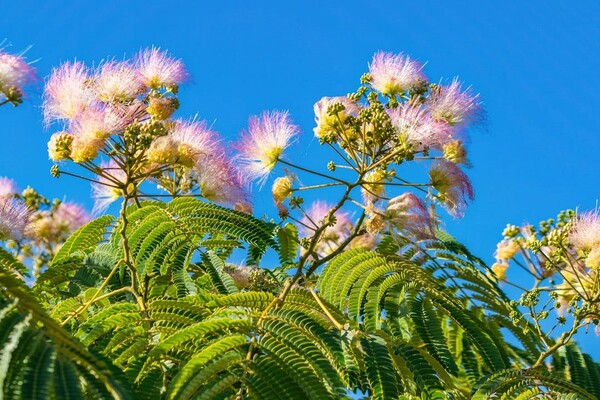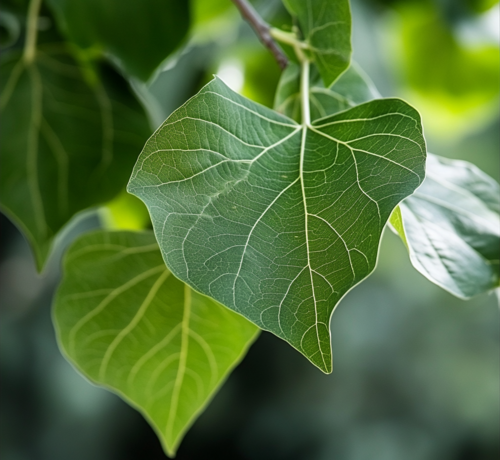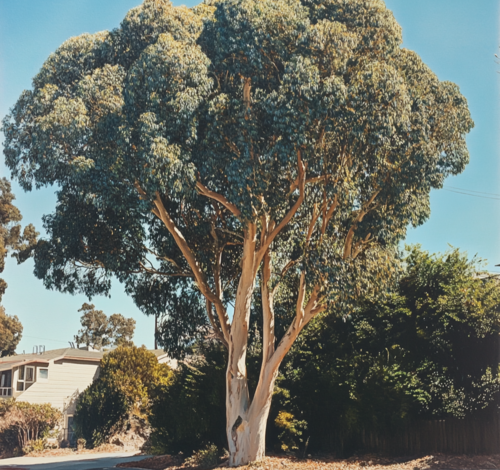Invasive Trees to Avoid on Your Property

Photo by Robert So
Introduction
If you live near a heavily wooded area or have additional trees in your landscaping that you did not plant yourself, you may want to be on the lookout for invasive tree species on your property. Invasive trees can spread aggressively, crowd out native plants, and disrupt local ecosystems. Here, we’ll discuss what makes a tree species invasive, highlight some of the most common invasive trees in the United States, and provide guidance on what to do if you discover them on your property.
What Makes a Tree Species Invasive?
Invasive species are plants, animals, or pathogens that pose a significant threat to native species and ecosystems. They often spread rapidly, outcompeting native flora and fauna, which can lead to a decline in biodiversity. Invasive trees are species that have spread beyond their natural range, often due to human activities like landscaping, agriculture, or accidental introduction.
When these nonnative trees establish themselves in an area, they can cause substantial environmental and economic harm. They may deplete resources, alter soil composition, or even release chemicals that inhibit the growth of other plants. Invasive trees are especially problematic when they impact native forests, disrupt agricultural areas, or pose health risks to humans.
Key Characteristics of Invasive Trees:
- Rapid Growth: Invasive trees often grow faster than native species, allowing them to dominate an area quickly.
- Aggressive Root Systems: These trees may develop strong root systems that can damage infrastructure or prevent other plants from accessing nutrients and water.
- Prolific Seed Production: Many invasive trees produce large amounts of seeds that spread easily, establishing themselves in diverse environments. Now, let’s examine some of the most invasive tree species commonly found in the United States.
White Poplar (Populus alba)

A Detailed View of a White Poplar Leaf'
The white poplar, originally introduced to North America in 1748, is often planted for its attractive silvery leaves and ornamental appeal. However, this tree is highly invasive and can quickly spread beyond intended planting areas, outcompeting native plants.
- Habitat Spread: White poplar is found in 43 states, where it thrives in fields, forests, and other open areas.
- Environmental Impact: This species disrupts natural succession in plant communities by forming dense colonies that prevent other plants from accessing sunlight, nutrients, and water.
- Adaptability: White poplar can grow in various soils and produces large seed crops, which facilitate rapid spread. When cut or damaged, it resprouts readily, making removal efforts challenging.
Consider alternative native trees with silvery foliage, such as the Silver Maple, to avoid contributing to this tree’s spread.
Mimosa (Silk) Tree (Albizia julibrissin)
The mimosa tree, also known as the "silk tree," was introduced to the United States from Asia and Africa in 1745. Known for its feathery, fernlike leaves and fragrant pink flowers, it is popular in ornamental landscapes. However, its beauty comes at a cost to local ecosystems.
- Range: Mimosa trees are prevalent along the East Coast and have spread as far west as Indiana.
- Invasiveness: Once established, mimosa trees are difficult to eradicate due to their long-lived seeds and their ability to resprout. They primarily invade riparian areas and spread downstream, which can negatively impact water quality and riparian habitats.
- Cold Sensitivity: This species is somewhat limited by harsh winters, as extreme cold can damage it. However, in temperate climates, it remains a serious threat.
For a similar appearance, consider the honey locust tree, which has attractive foliage but is not invasive.
Eucalyptus (Eucalyptus globulus)

A Towering Eucalyptus Tree Enhancing a Suburban Setting
The eucalyptus tree, native to Australia, was introduced to California in the 1850s during the Gold Rush. It was originally planted as a fast-growing source of timber, windbreaks, and firewood. However, its rapid growth and adaptability have made it a highly invasive species along the West Coast.
- Habitat Spread: Eucalyptus trees dominate many areas of California, particularly coastal regions, foothills, and urban environments. They thrive in poor soils and resist drought, making them well suited to California’s climate.
- Environmental Impact: These trees outcompete native species by forming dense groves that block sunlight, use up water resources, and deposit allelopathic compounds into the soil, which inhibits the growth of other plants.
- Fire Risk: Eucalyptus trees are notorious for their flammable oils, which significantly increase the risk and intensity of wildfires. In regions like Northern California, dense eucalyptus groves have contributed to devastating fires.
- Wildlife Impact: While eucalyptus trees provide some shelter for wildlife, they do not support the rich biodiversity that native trees like oaks or redwoods do.
To reduce the spread of eucalyptus, consider planting native alternatives like the coast live oak or California sycamore, which are better adapted to support local ecosystems.
Tree of Heaven (Ailanthus altissima)
The tree of heaven, also known as Ailanthus altissima, was introduced to the U.S. in 1784 by a gardener from Philadelphia. Originally from Asia, it was valued for its rapid growth and promoted for silk production. However, this fast-growing tree has become one of the most invasive species in the country.
- Habitat: Tree of heaven can be found in almost every state, from California to Maine, thriving along roadsides, fence lines, and waste areas where sunlight is ample.
- Allelopathy: This tree produces a toxic chemical called ailanthone that prevents other vegetation from growing nearby, creating a monoculture that stifles biodiversity.
- Size and Resilience: It can reach heights of up to one hundred feet and withstand a wide range of adverse conditions, making it difficult to control.
Consider alternatives like s umac for areas where quick, dense foliage is desired without the invasive spread.
Norway Maple (Acer platanoides)

A Detailed View of Norway Maple Leaves
The Norway maple, introduced to North America from Europe in the mid-1700s, was originally popular for its hardy nature and shade-producing qualities. However, it is now widely recognized as a highly invasive species across much of the northeastern United States and beyond.
- Rapid Spread: Norway maple produces an abundance of seeds that are easily dispersed by wind, allowing it to spread rapidly into forests and natural areas.
- Impact on Native Plants: This species forms dense canopies that block sunlight, preventing native plants from thriving beneath it. Additionally, it has an extensive root system that competes aggressively for water and nutrients, leading to the decline of nearby vegetation.
- Soil Alteration: The leaf litter from Norway maples is known to alter soil composition, creating conditions that are unfavorable for many native plant species.
To reduce the spread of invasive Norway maple, consider planting native shade trees like the s ugar maple or red maple, which support biodiversity and are better suited to local ecosystems.
What Should You Do if You Discover Invasive Trees?
If you discover invasive trees on your property, it’s essential to take action to protect the local ecosystem. Here are some steps you can take:
Identify the Trees
Confirm that the trees on your property are indeed invasive species by consulting a local arborist or referencing reputable plant identification resources.
Contact a Professional Tree Removal Service
Invasive trees can be challenging to remove due to their deep root systems and resprouting abilities. Contact a professional tree service to handle removal safely and effectively. If you are in the San Francisco Bay Area, Arborist Now provides expert tree removal and management services and can assist in safely removing these trees to minimize ecological impact.
Monitor for Regrowth
After removal, monitor the area for regrowth, as invasive trees may return through seedlings or root systems. Regular monitoring and prompt removal of new growth can prevent reestablishment.
Plant Native Trees
Consider replacing invasive trees with native species to support biodiversity and ensure that your landscape remains beneficial to the local ecosystem. Native trees also tend to require less maintenance and water, making them a more sustainable choice.
By being proactive about invasive tree species on your property, you can help protect the natural beauty and ecological health of your environment.
Originally posted on January 3, 2019.





